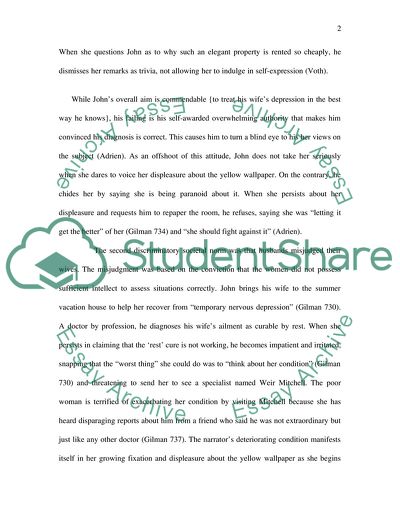Cite this document
(Through the Eye of a Feminist Assignment Example | Topics and Well Written Essays - 1994 words, n.d.)
Through the Eye of a Feminist Assignment Example | Topics and Well Written Essays - 1994 words. Retrieved from https://studentshare.org/sociology/1710881-charlotte-perkins-gilman-and-her-famous-work-the-yellow-wallpaper
Through the Eye of a Feminist Assignment Example | Topics and Well Written Essays - 1994 words. Retrieved from https://studentshare.org/sociology/1710881-charlotte-perkins-gilman-and-her-famous-work-the-yellow-wallpaper
(Through the Eye of a Feminist Assignment Example | Topics and Well Written Essays - 1994 Words)
Through the Eye of a Feminist Assignment Example | Topics and Well Written Essays - 1994 Words. https://studentshare.org/sociology/1710881-charlotte-perkins-gilman-and-her-famous-work-the-yellow-wallpaper.
Through the Eye of a Feminist Assignment Example | Topics and Well Written Essays - 1994 Words. https://studentshare.org/sociology/1710881-charlotte-perkins-gilman-and-her-famous-work-the-yellow-wallpaper.
“Through the Eye of a Feminist Assignment Example | Topics and Well Written Essays - 1994 Words”, n.d. https://studentshare.org/sociology/1710881-charlotte-perkins-gilman-and-her-famous-work-the-yellow-wallpaper.


